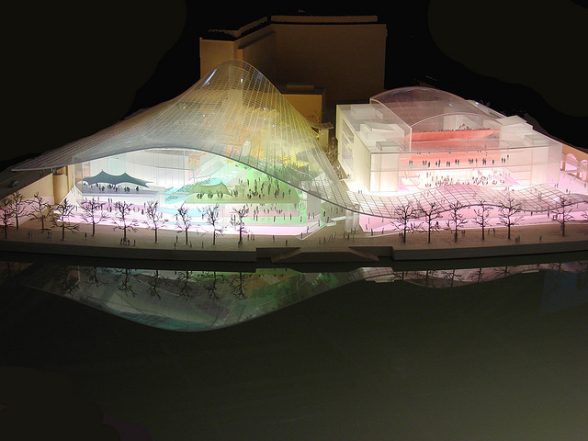This website uses cookies
This website uses cookies to enable it to function properly and to analyse how the website is used. Please click 'Close' to accept and continue using the website.



Image: Pete Woodhead, Southbank Centre
As the nation prepares to bid a final farewell to Her Majesty Queen Elizabeth II and begins to reflect upon the immense legacy of her 70 year reign, C20 Society is calling for the lifting of a COI (Certificate of Immunity from listing) on the Queen Elizabeth Hall and Hayward Gallery, situated on London’s Southbank.
Stretching from the Royal Festival Hall, centrepiece of the 1951 Festival of Britain (designed by Robert Matthew, J L Martin and Peter Moro), to the Royal National Theatre (Denys Lasdun, 1976), the string of institutions on the Southbank of the River Thames is one of the of the defining architectural and cultural achievements of the second Elizabethan age.
Yet while the Festival Hall and National Theatre are both listed at a high grade (Grade I and II* respectively), the complex of exhibition and performance venues that provides a coherent visual link between the two have repeatedly come under threat and been overlooked for listing on numerous occasions.

Image: Art Fund UK
The Queen Elizabeth Hall and Hayward Gallery were built by the London County Council (later the Grater London Council or GLC) and both were opened by Her Majesty, in 1967 and 1968 respectively. These were adventurous compositions, designed by a young team under the leadership of architect Norman Engleback, with board-marked concrete surfaces inside and out, connected to walkways, staircases and rooftop terraces, with massive concrete air conditioning ducts prominent. It was in deliberate contrast to the smooth, almost ‘Classical’ Modernism of the neighbouring Royal Festival Hall.
The abolition of the GLC in 1986 led to the creation of the South Bank Board, which sought to generate more income from the site. The then unpopular 1960s buildings presented an attractive target for redevelopment with revenue-earning spaces, with the subsequent three and half decades seeing numerous damaging plans and proposals for the complex.
A scheme by Terry Farrell was launched in 1989, which would have wrapped the buildings in a postmodern shell, yet was abandoned in 1993. A £70m Richard Rogers alternative was chosen in competition in 1994 – ‘The Wave’, a glass roof concealing these buildings and semi-enclosing the outdoor spaces. Criticised for lack of practicality and high cost, this was also axed after it failed to receive Lottery funding. A masterplan for the whole South Bank by Rick Mather (1999) promised ‘Mather’s trademark rational, cool, modern approach’ as ‘the perfect antidote to the centre’s drab squalor’ (Edwin Heathcote). This scheme remained unexecuted until 2013, when a further scheme by Feilden Clegg Bradley was launched, with significant alterations and new elements that would have made the original buildings unrecognizable. This in turn was defeated in 2014, largely owing to the protests of the skateboarders in the undercroft of the QEH, whose ‘Long Live the Southbank’ campaign attracted some 80,000 supporters.

Image: © Flickr User CC dalbera
In 2015, a much more sensitive and sympathetic restoration led by Feilden Clegg Bradley finally accentuated the character and quality of the buildings, coinciding with a newfound public affection for their brutalist architecture that was once so reviled.
Historic England and C20 have made repeated attempts to gain listed status for the buildings, with listing being recommended on four separate occasions since 1992, each time DCMS has overturned the advice of its own specialist heritage advisers. A COI (Certificate of Immunity from listing) on the site was renewed in 2020 and is due to expire in 2025.
The Southbank is a singular achievement of the post-war age, with the Queen Elizabeth Hall and Hayward Gallery an integral part of the most important complex of modernist buildings in the country. At this moment of national reflection, the Society believe that belatedly recognising and listing them would be a fitting mark of respect.

Become a C20 member today and help save our modern design heritage.